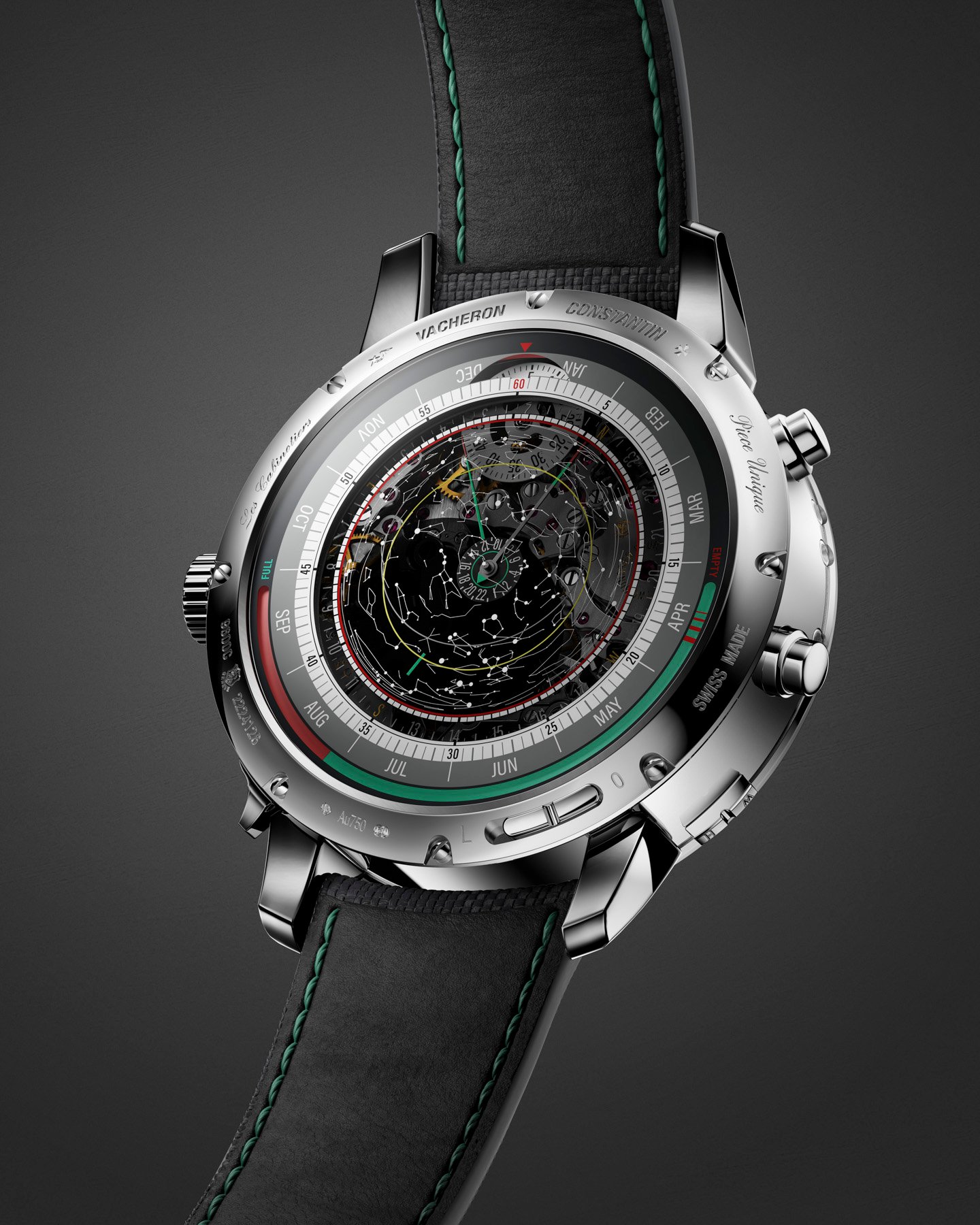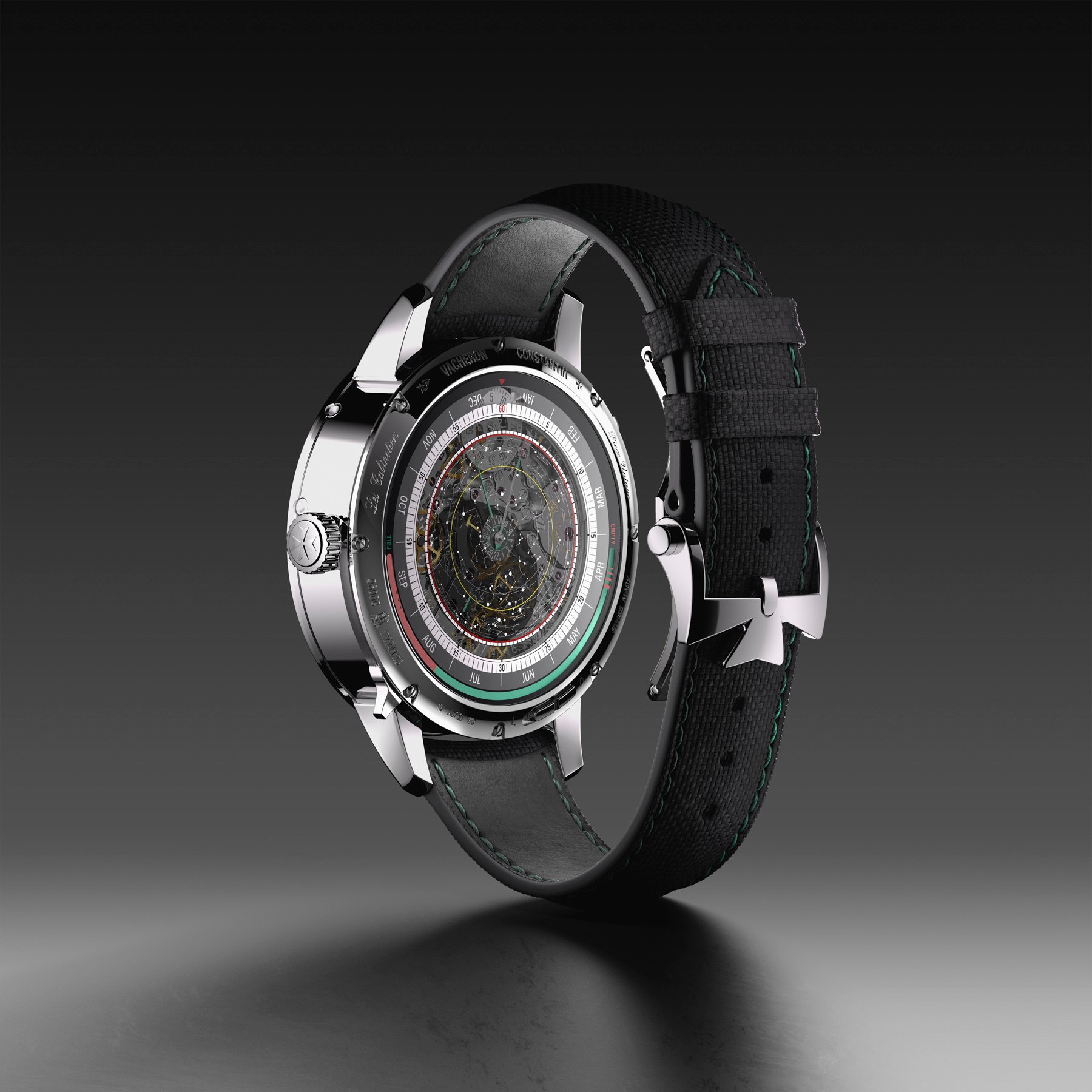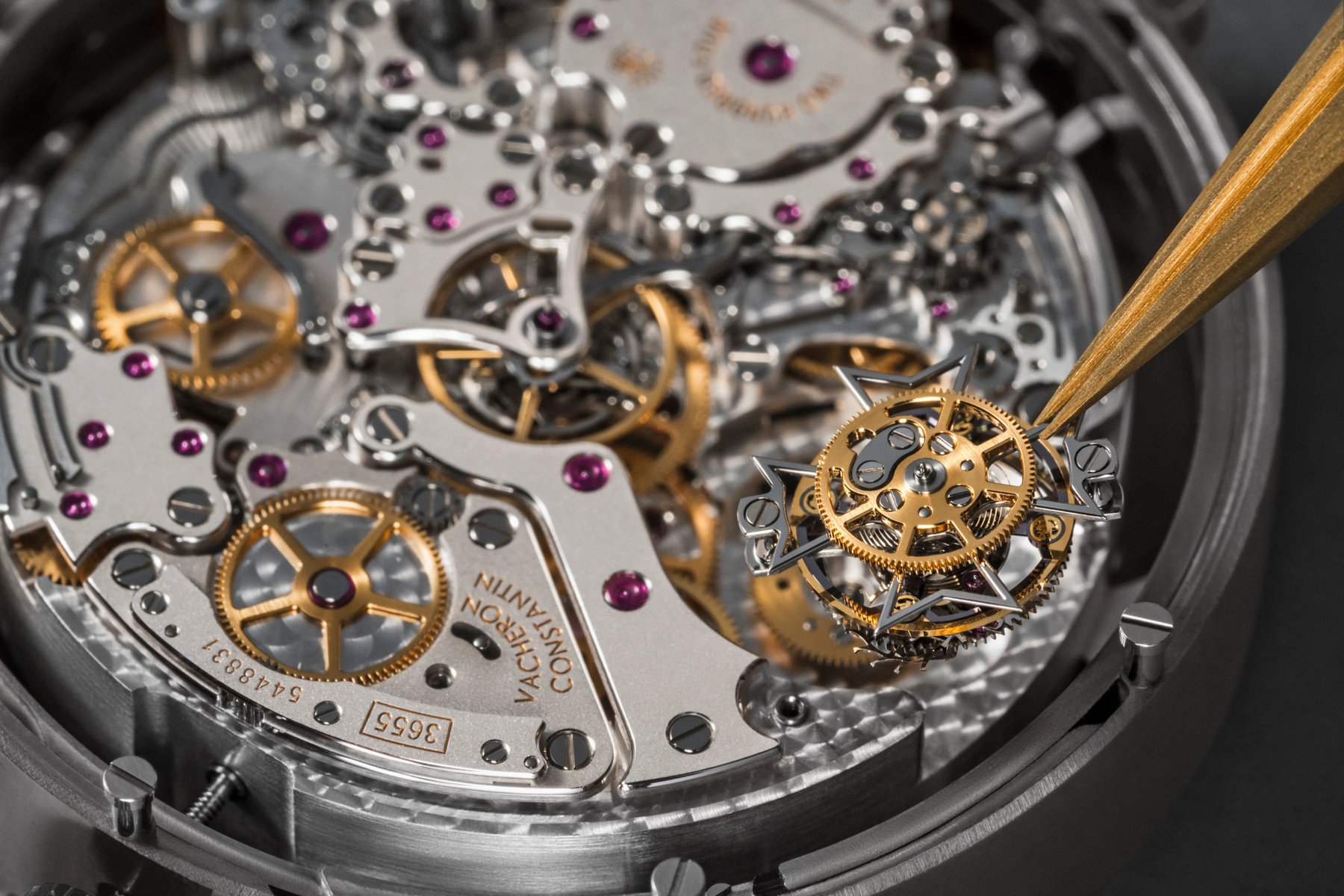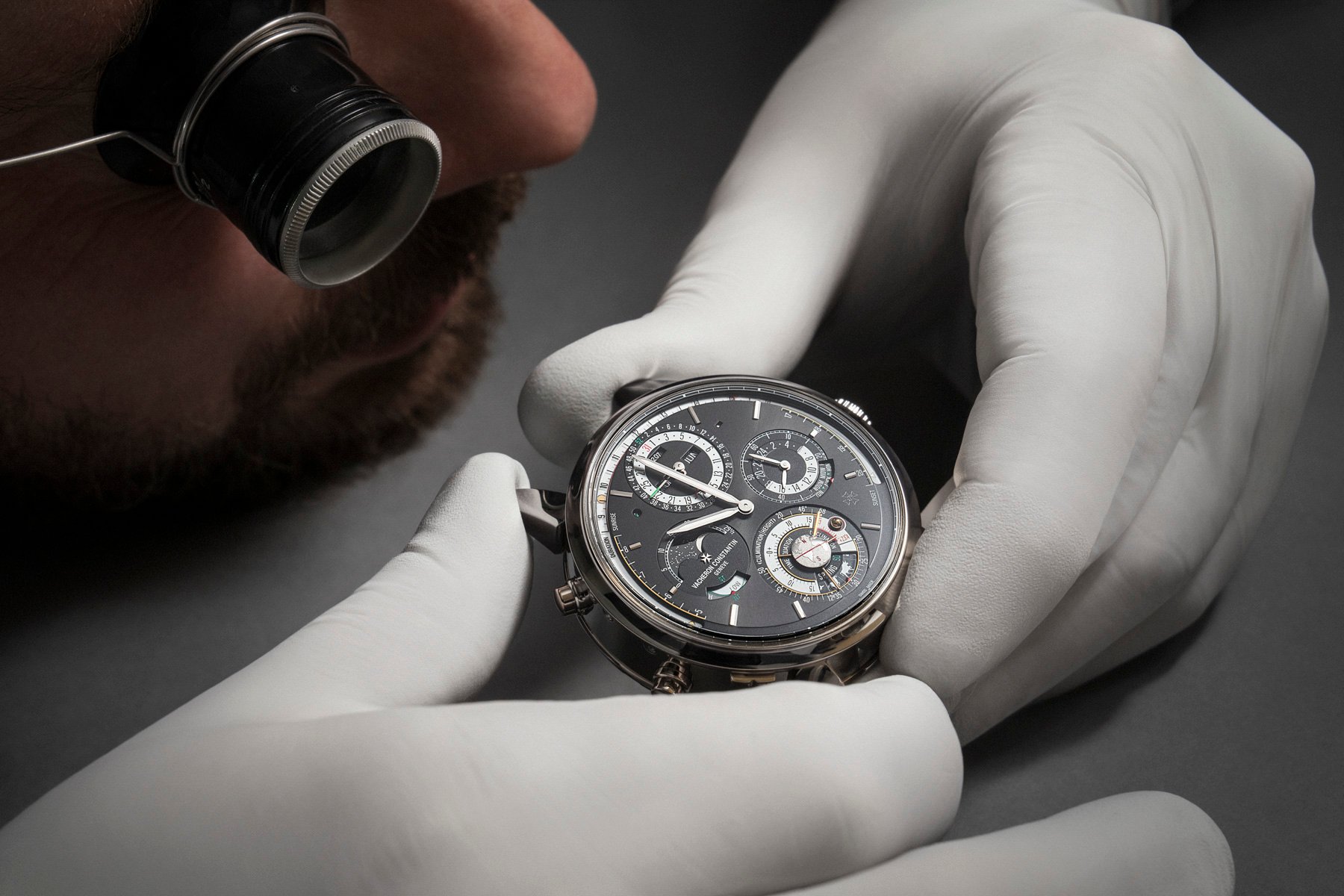Introducing: The Vacheron Constantin Les Cabinotiers Solaria Ultra Grand Complication
The Vacheron Constantin Les Cabinotiers Solaria Ultra Grand Complication is a pièce unique that showcases its maker’s horological muscle. The world’s most complicated wristwatch brings to the fore several groundbreaking features. Let’s take a look.
The Vacheron Constantin Les Cabinotiers Solaria
Vacheron Constantin is a watchmaker that needs no introduction. One of the “Holy Trinity” (alongside Patek Philippe and Audemars Piguet), the brand is a titan in the industry. So it seems fitting that Vacheron is turning heads this year at Watches and Wonders with the world’s most complicated wristwatch. The Les Cabinotiers Solaria Ultra Grand Complication not only has 41(!) complications but manages to squeeze them into an 18K white gold case with a 45mm diameter and a 14.99mm profile. It seems like the folks at Vacheron were determined for the watch to be less than 15mm thick. The new manufacture caliber 3655 has 1,521 components and 13 patent applications pending. It also contains 204 jewels and ticks away at 21,600 beats per hour. Despite its mind-boggling complexity, the caliber also offers 72 hours of power when fully wound. Let’s discover some of its marvelous movement’s many features.
The first gear train is dedicated to the 24-hour day of civil time — the legal time used throughout the world, which is based on International Atomic Time. The front dial of the watch shows this via a central hour and minute hand with an auxiliary display of world time and a second time zone.
The second gear train is dedicated to sidereal time, showing the minutes on the edge of the sapphire case back and the hours on a rotating disc beneath it. A sidereal day is the time it takes for Earth to complete a full 360° rotation when taking a fixed star as a reference point.
A use for tropical time
The third gear train is devoted to displaying solar (or tropical) time. As Vacheron explains, “Because Earth’s path around the Sun is elliptical, not circular, and since Earth’s axis is inclined at 23.4° to the ecliptic (the plane of its orbit), the time taken for the Sun to pass its zenith varies throughout the year. This difference between the solar day (true) and the civil day (average) of 24 hours, varies from -16 to +14 minutes depending on the time of year and coincides only four times in twelve months (the equinoxes and solstices).” This is displayed on the sub-dial at 6 o’clock.
If all that isn’t enough, the caliber 3655 within the Les Cabinotiers Solaria watch also displays five astronomical complications. These are the position, height, culmination, and declination of the Sun as well as the temporal tracking of celestial objects. That last one is connected to the watch’s split-seconds chronograph function. This makes it possible to calculate the time it takes for a constellation or specific star to appear within the observer’s field of view.
A chiming mechanism and multiple finishes
One of the challenges Vacheron faced when producing this watch was displaying so much information as legibly as possible. The watch has four sub-dials on the front, two of which display up to five complications, and a back that combines a sky map and chronograph functions. The Maison says it decided to design the watch with contrasts in mind to help enhance legibility. Part of this was utilizing nine types of finishing — beveling, brouillage, circling, graining, mirror polishing, matte polishing, sandblasting, satin polishing, and sunray brushing.
Another major challenge was housing a chiming mechanism without making the watch too thick. The brand decided to utilize a Westminster carillon, which has four gongs and four hammers, making it a complex and sophisticated musical sequence in horological terms. Vacheron attached the gongs to the middle case via rectangular sections to help amplify the sound. The overall design of this component is subject to seven of the 13 outstanding patents of the Vacheron Constantin Les Cabinotiers Solaria.
The list of complications within the Vacheron Constantin Les Cabinotiers Solaria
The full list of complications is too long to go into each individually, so I will list them below, as provided by Vacheron Constantin:
Time measurement (6)
- Day/night indication for reference city
- Hours and minutes for the second time zone (on 24-hour display)
- World-time indication for 24 cities
- Day/night indication for the second time zone
- 3Hz tourbillon with silicon balance wheel (with high Q factor)
- Civil-time display module coupled to the base movement
Gregorian Perpetual Calendar (8)
- Perpetual calendar
- Days of the week
- Date
- Months
- Year indication
- Leap-year indication
- Indication for the number of the week within the year (ISO 8601 calendar)
- Number of the day of the week (ISO 8601 calendar)
Lunar indications (3)
- Astronomical lunar phases and age of the Moon
- Tide level indicator
- Indication for spring and neap tides
The complications continue…
Astronomical indications (14)
- Indication of seasons, equinoxes, and solstices
- Position of the Sun
- Sunrise time (according to the city of reference)
- Sunset time (according to the city of reference)
- Duration of the day (according to the city of reference)
- Equation of time on tropical (solar) gear
- Culmination time of the Sun (according to the city of reference)
- Height of the Sun above the horizon (according to the city of reference)
- Declination of the Sun, three-dimensional Earth showing the latitude of the Sun in the Northern/Southern hemisphere
- Sidereal hours
- Sidereal minutes
- Astronomical zodiac signs
- Sky chart (according to the city of reference)
- Temporal tracking of celestial objects
Chiming complications (5)
- Minute repeater
- Westminster carillon chime (four hammers and four gongs)
- Choice of hour-only or full chime
- Crown-locking system during the chiming
- Double-stop hammer system to limit rebound and optimize the transmission of the hammers’ kinetic energy
Split-seconds Chronograph (4)
- Chronograph (one column wheel)
- 60-minute counter
- Split-seconds chronograph (one column wheel)
- Isolator system for the split-seconds chronograph
Additional feature (1)
- Power-reserve indication (outer disc at 190°)
The chronograph readings are displayed on the back of the watch, with a 60-minute counter located at 12 and a peripheral graduation of seconds. The two split-seconds chronograph hands are anchored at the center of the dial.
Concluding thoughts
Vacheron Constantin has once again proved why it is one of the three great Swiss watchmakers. This unique Les Cabinotiers Solaria Ultra Grand Complication shows not only Vacheron’s watchmaking muscle but also the house’s appetite to push the boundaries of what’s possible in mechanical horology. Will I ever see this watch in the metal? Probably not, but I can nevertheless appreciate it from a distance. Bravo, Vacheron!












